Bluish wildflowers
Most of these flowers have little in common beyond having bluish to purplish petals.
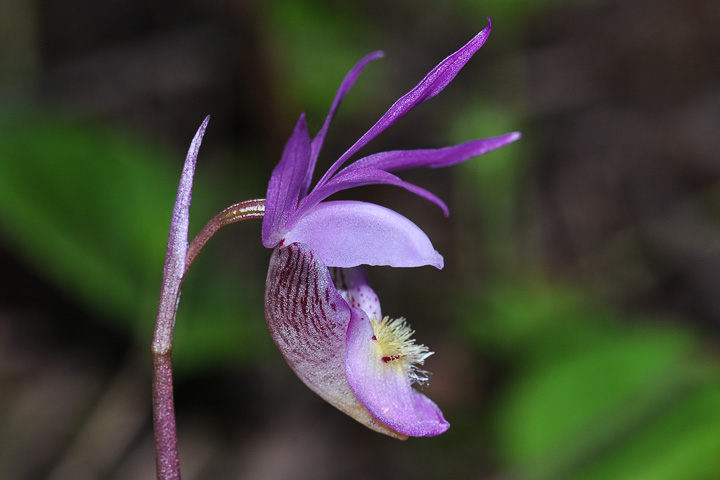 The fairy slipper or calypso orchid (Calypso bulbosa) is inconspicuous on the forest floor below conifers. Indeed, the word, calypso, is a Greek word meaning, hidden.
The fairy slipper or calypso orchid (Calypso bulbosa) is inconspicuous on the forest floor below conifers. Indeed, the word, calypso, is a Greek word meaning, hidden.
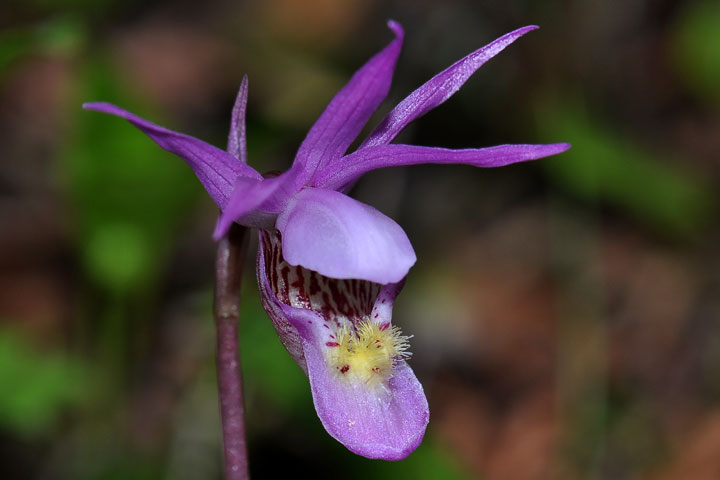 As with other local wild orchids, the fairy slipper depends upon a fungus in the soil. Consequently, it cannot easily be transplanted and should never be picked.
As with other local wild orchids, the fairy slipper depends upon a fungus in the soil. Consequently, it cannot easily be transplanted and should never be picked.
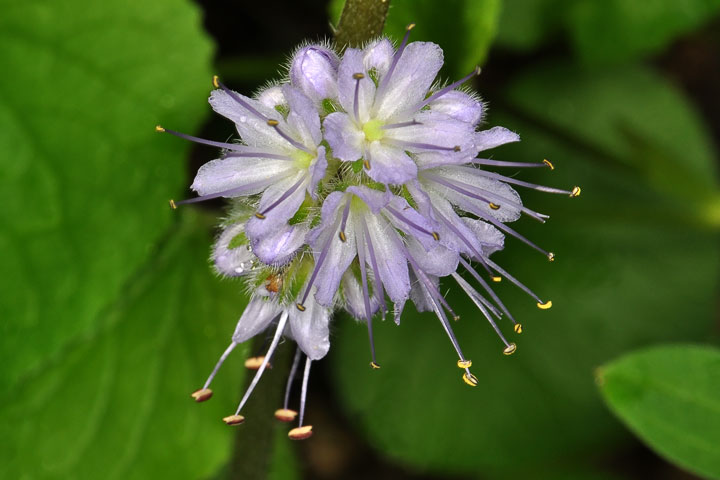 This waterleaf (Hydrophyllum capitatum) displays a ball–shaped flowerhead which ranges in colour from white to lavender to blue.
This waterleaf (Hydrophyllum capitatum) displays a ball–shaped flowerhead which ranges in colour from white to lavender to blue.
 The aster (Symphyotrichum foliaceum) is found throughout southern BC. It looks somewhat like a daisy with bluish petals. These ones were found at Gibson Lake in Kokanee Glacier Park.
The aster (Symphyotrichum foliaceum) is found throughout southern BC. It looks somewhat like a daisy with bluish petals. These ones were found at Gibson Lake in Kokanee Glacier Park.
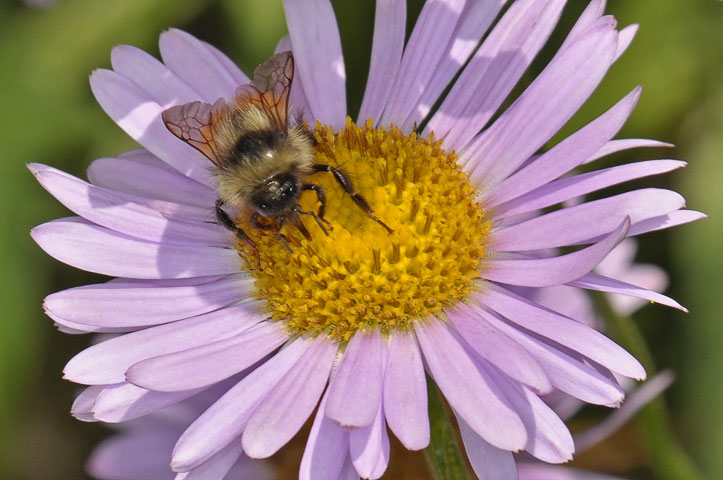 A bumble bee visits an aster
A bumble bee visits an aster
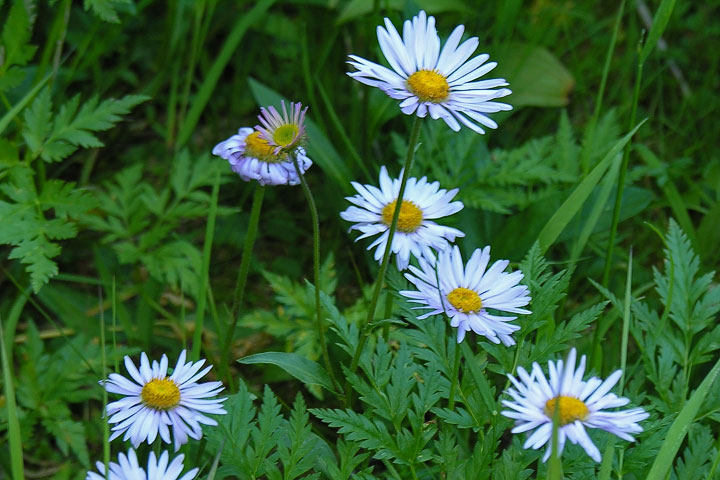 A field of asters.
A field of asters.
 The blue clematis (Clematis occidentalis) grows on a vine which can range up to ten meters long.
The blue clematis (Clematis occidentalis) grows on a vine which can range up to ten meters long.  Nicole Tremblay
Nicole Tremblay
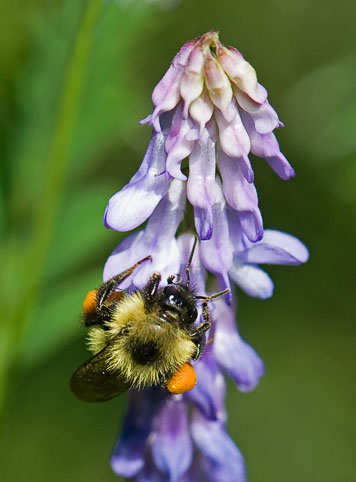 Tufted vetch (Vicia cracca) is frequented by bees and butterflies for its nectar. This bumblebee has filled both of its pollen sacks.
Tufted vetch (Vicia cracca) is frequented by bees and butterflies for its nectar. This bumblebee has filled both of its pollen sacks.
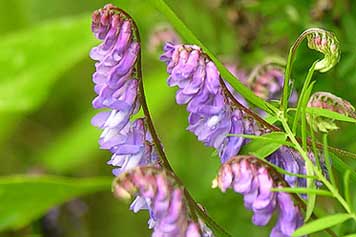 The tufted vetch (Vicia cracca) is a rapidly growing plant whose flowers are arranged in a one–sided raceme.
The tufted vetch (Vicia cracca) is a rapidly growing plant whose flowers are arranged in a one–sided raceme.
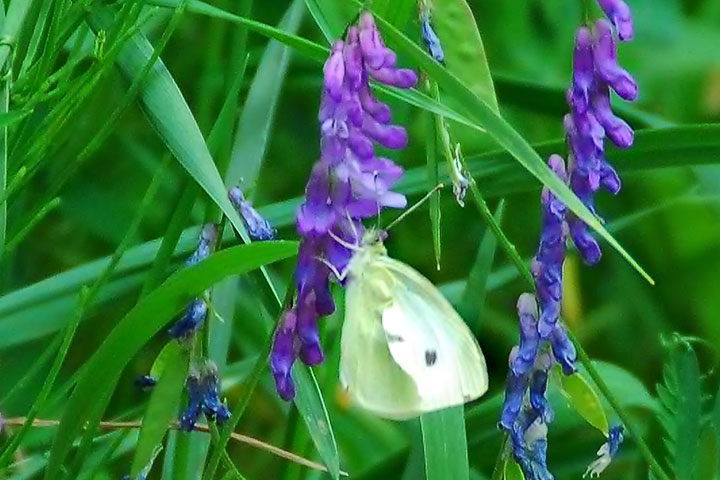 A sulphur visits a tufted vetch.
A sulphur visits a tufted vetch.
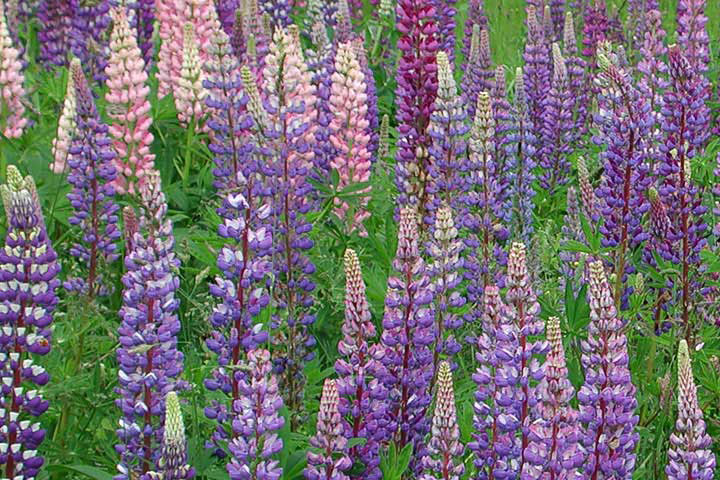 The large–leaved lupine (Lupinus polyphyllus) can present a dazzling display on dry slopes during May and June. These were along the West Arm of the Lake.
The large–leaved lupine (Lupinus polyphyllus) can present a dazzling display on dry slopes during May and June. These were along the West Arm of the Lake.
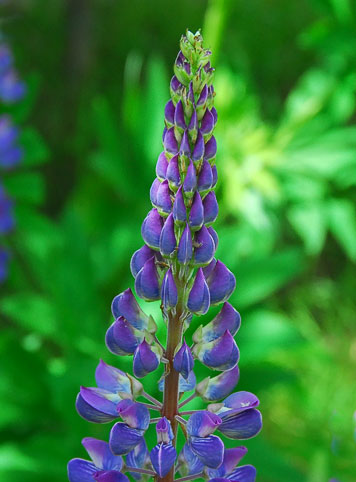 The stock of the lupine forms a raceme—hundreds of individual flowers, each on its own short pedicel. As with all racemes, the flowers bloom progressively from the bottom up.
The stock of the lupine forms a raceme—hundreds of individual flowers, each on its own short pedicel. As with all racemes, the flowers bloom progressively from the bottom up.
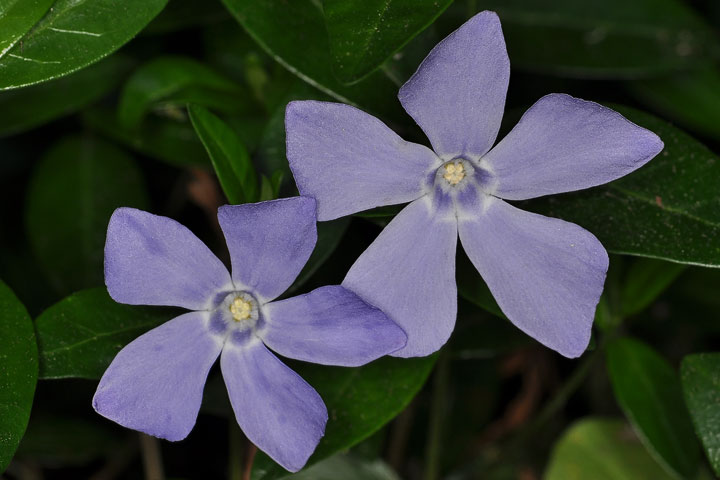 The bigleaf periwinkle (Vinca major) is an foreign implant and had only been known to be found in the wild at the Coast. However, this picture was taken in Kokanee Creek Provincial Park. The flower has clearly escaped the gardens locally.
The bigleaf periwinkle (Vinca major) is an foreign implant and had only been known to be found in the wild at the Coast. However, this picture was taken in Kokanee Creek Provincial Park. The flower has clearly escaped the gardens locally.
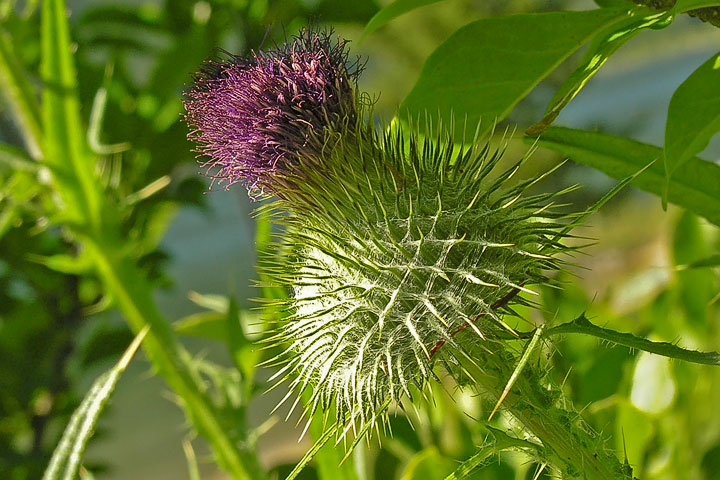 There are a number of species of thistle. I am not able to tell them apart, but this may be the bull thistle (Cirsium vulgare). If so, it isn’t an invasive species.
There are a number of species of thistle. I am not able to tell them apart, but this may be the bull thistle (Cirsium vulgare). If so, it isn’t an invasive species.
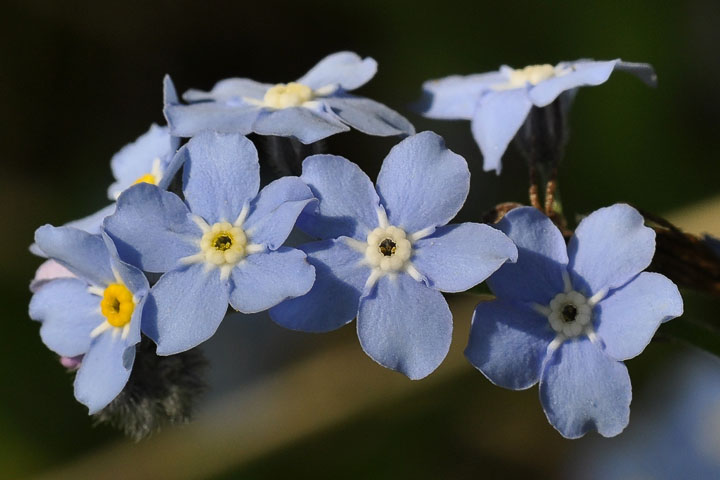 There are a few different species of forget–me–not. This may well be the one referred to as the true forget-me-not (Myosotis scorpioides).
There are a few different species of forget–me–not. This may well be the one referred to as the true forget-me-not (Myosotis scorpioides).
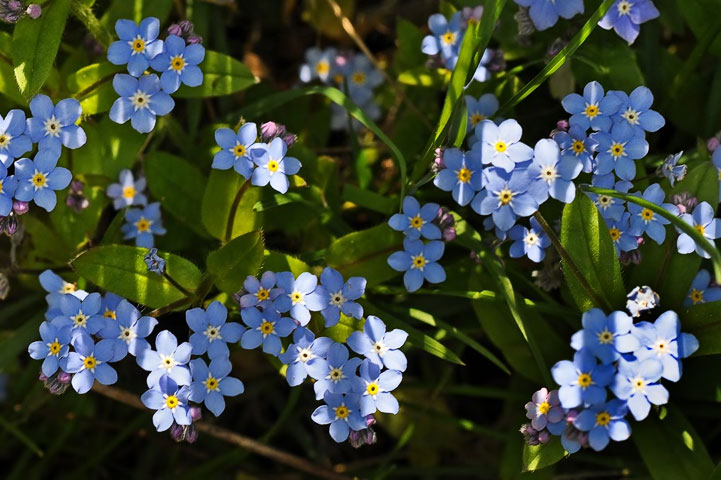 The tiny flowers of the forget-me-not can blanket a field in May.
The tiny flowers of the forget-me-not can blanket a field in May.
 The purple yarrow, a not all–that–common variant on normal yarrow.
The purple yarrow, a not all–that–common variant on normal yarrow.
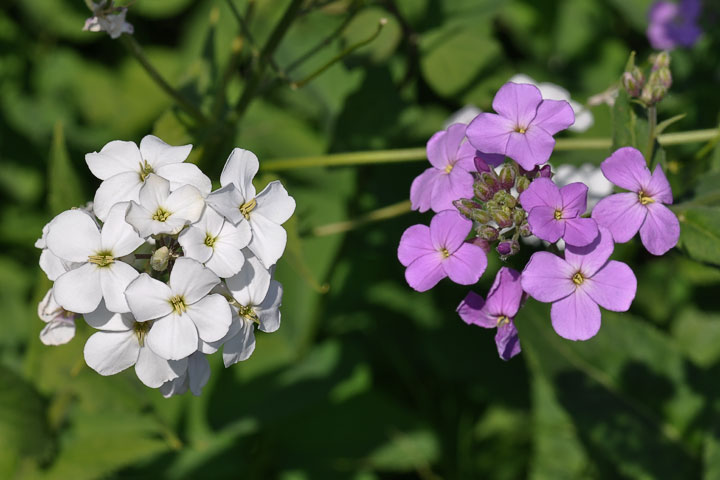 The dame’s rocket (Hesperis matronalis) comes in shades ranging from white to blue.
The dame’s rocket (Hesperis matronalis) comes in shades ranging from white to blue.
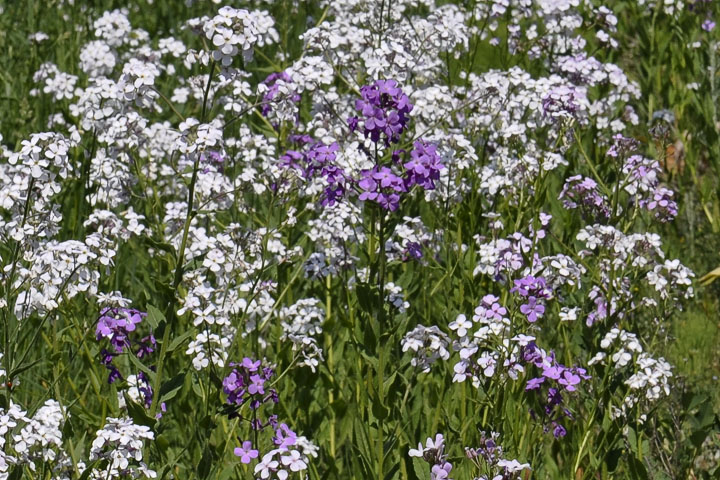 Dame’s rocket thrives in moist, well-drained soil in full sun or partial shade. These ones were seen in early June along the railway line through Nelson.
Dame’s rocket thrives in moist, well-drained soil in full sun or partial shade. These ones were seen in early June along the railway line through Nelson.
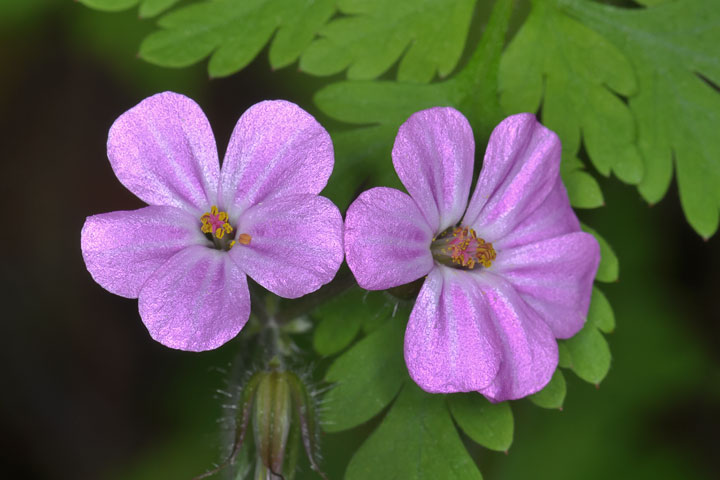 This is a wild geranium known as Robert’s geranium (Geranium robertianum). This introduced spices which has become naturalized in B.C.
This is a wild geranium known as Robert’s geranium (Geranium robertianum). This introduced spices which has become naturalized in B.C.
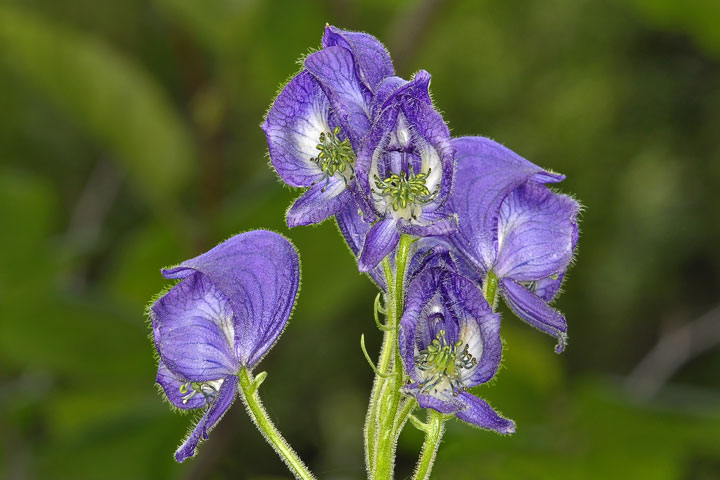 All parts of the columbian monkshood (Aconitum columbianum) are highly poisonous. Indeed, the genus name, aconitum, means without a struggle suggesting how its victim would expire.
All parts of the columbian monkshood (Aconitum columbianum) are highly poisonous. Indeed, the genus name, aconitum, means without a struggle suggesting how its victim would expire.
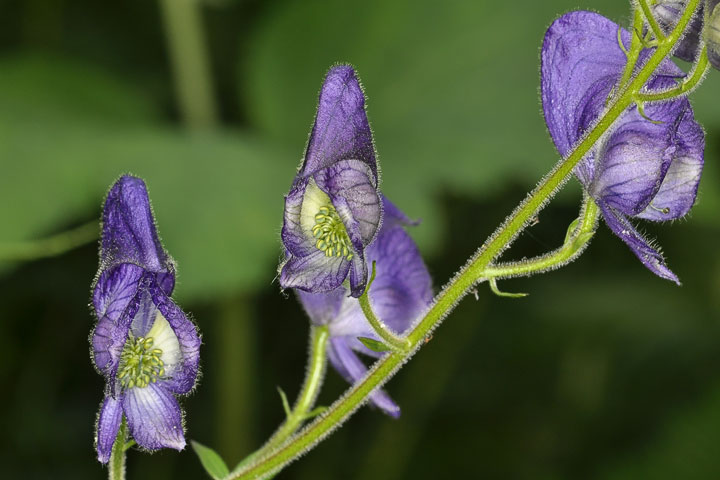 The columbian monkshood isn’t easily confused with any other flower. The hood is a modified petal.
The columbian monkshood isn’t easily confused with any other flower. The hood is a modified petal.
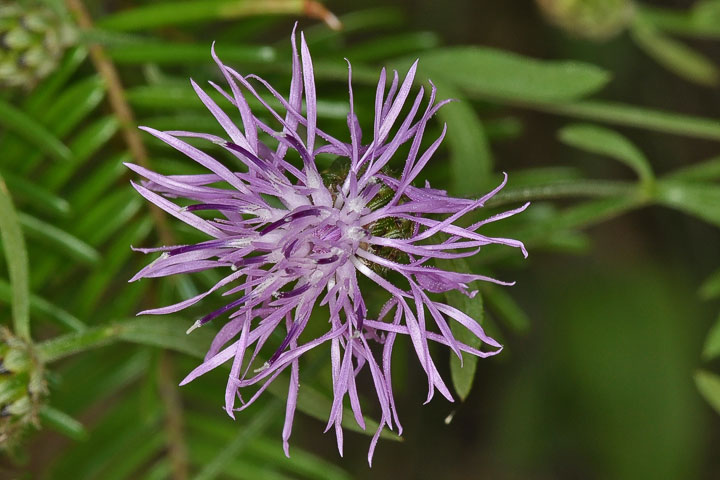 This delecate–looking flower is the much maligned spotted knapweed (Centaurea maculosa).
This delecate–looking flower is the much maligned spotted knapweed (Centaurea maculosa).
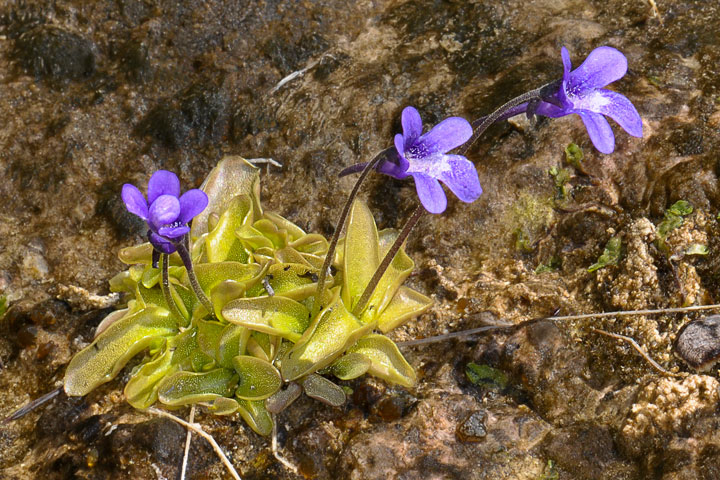 The butterwort (Pinguicula vulgaris) is an unusual plant: it is insectivorous. The butterwort usually grows on moist soil lacking in nutrients. It supplements its diet by attracting insects to the slimy surface of its leaves. The leaves curl over the trapped insects, dissolving and absorbing them. Hulks of dead insects can be seen on some of these leaves.
The butterwort (Pinguicula vulgaris) is an unusual plant: it is insectivorous. The butterwort usually grows on moist soil lacking in nutrients. It supplements its diet by attracting insects to the slimy surface of its leaves. The leaves curl over the trapped insects, dissolving and absorbing them. Hulks of dead insects can be seen on some of these leaves.
 A butterwort on a bank which shows clear seepage.
A butterwort on a bank which shows clear seepage.  Nicole Tremblay
Nicole Tremblay
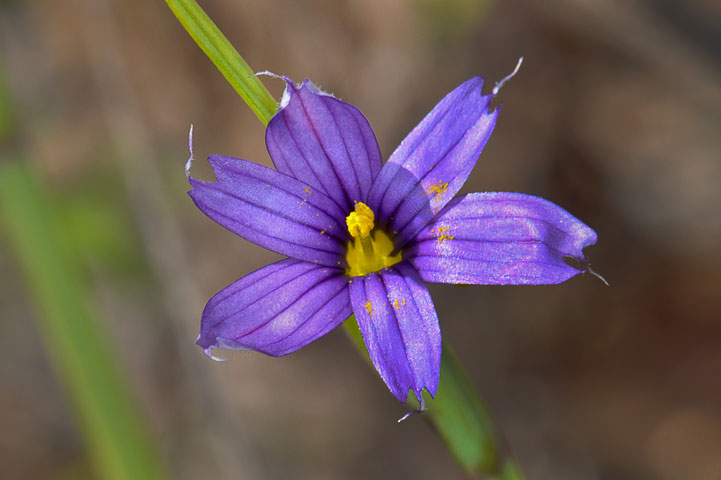 The blue–eyed grass (Sisyrinchium montanum) was growing alongside the the butterwort.
The blue–eyed grass (Sisyrinchium montanum) was growing alongside the the butterwort.
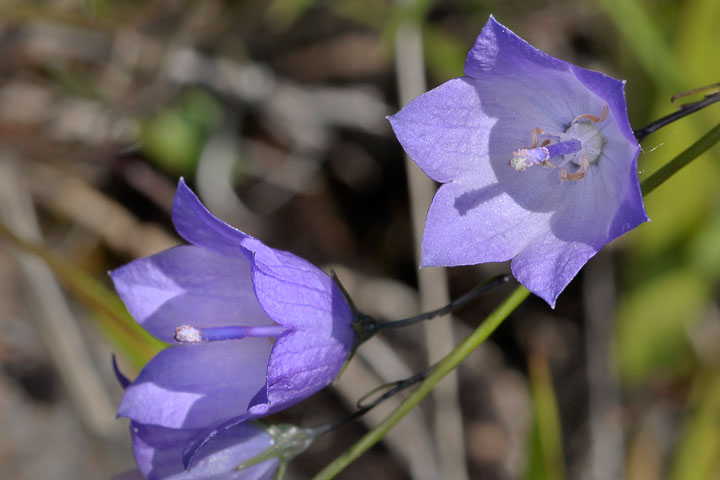 The harebell (Campanula rotundifolia) is usually blue, and while native here, is the same flower as the blue bells of Scotland. But, now and then a white one is seen (below).
The harebell (Campanula rotundifolia) is usually blue, and while native here, is the same flower as the blue bells of Scotland. But, now and then a white one is seen (below).
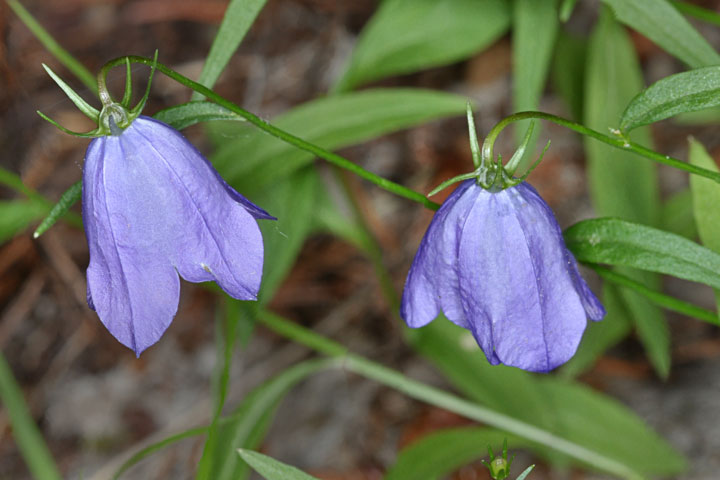 Blue harebells are common.
Blue harebells are common.
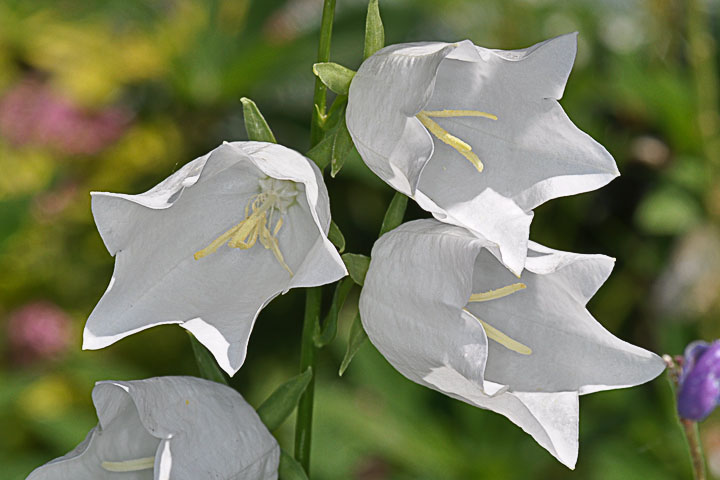 White harebells are not as common as the blue ones.
White harebells are not as common as the blue ones.
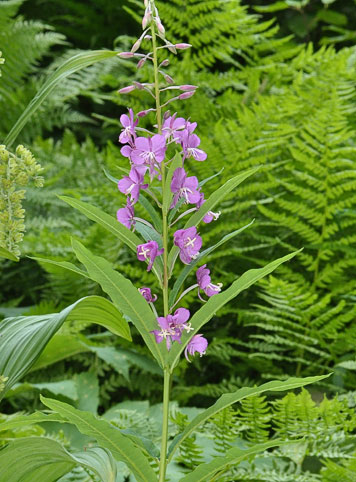 Tthe fireweed (Epilobium angustifolium) is so named because it springs up following a disturbance, such as fire.
Tthe fireweed (Epilobium angustifolium) is so named because it springs up following a disturbance, such as fire.
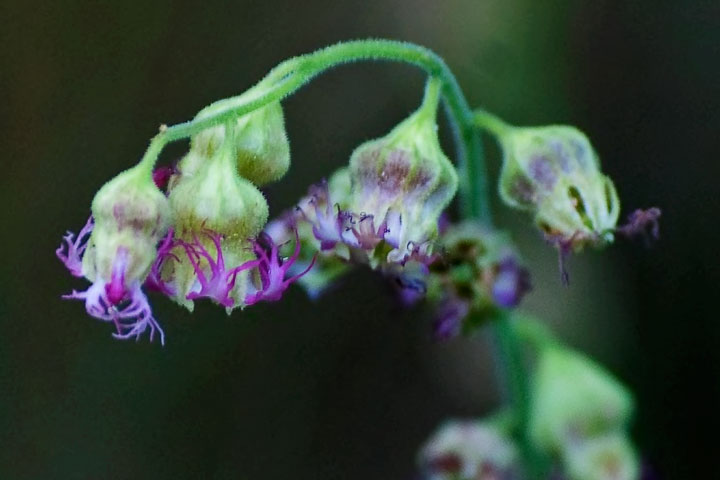 The tiny petals of the fringecup (Tellima grandiflora) form a fringe to the cup–shaped calyx.
The tiny petals of the fringecup (Tellima grandiflora) form a fringe to the cup–shaped calyx.
 Nicole Tremblay
Nicole Tremblay
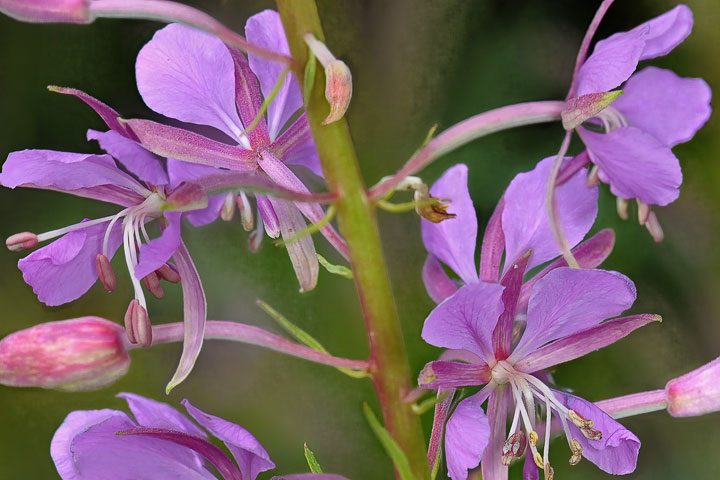 Purplish flowers grow along the tall stem of the fireweed
Purplish flowers grow along the tall stem of the fireweed
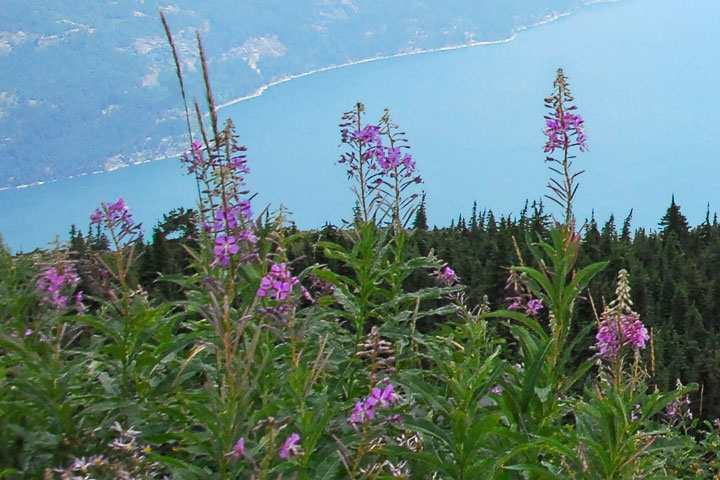 This fireweed has a spectacular view of Kootenay Lake, far below.
This fireweed has a spectacular view of Kootenay Lake, far below.
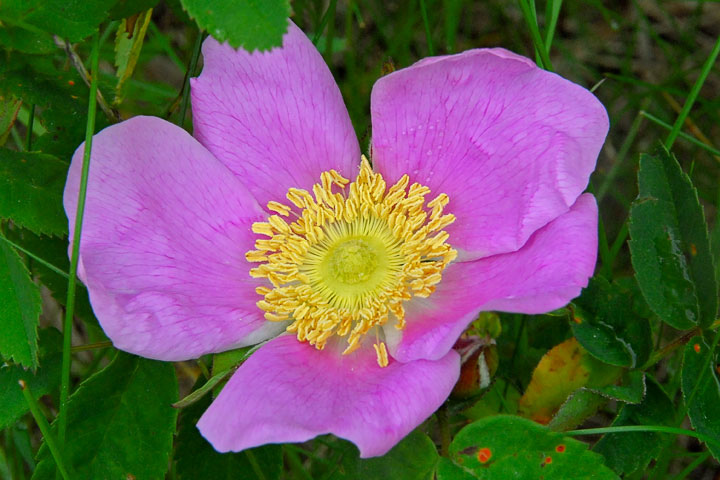 The flowers of the wild rose (Rosa acicularis) are large, pink and fragrant. They are found in clearings, open forests and rocky slopes throughout most of British Columbia.
The flowers of the wild rose (Rosa acicularis) are large, pink and fragrant. They are found in clearings, open forests and rocky slopes throughout most of British Columbia.
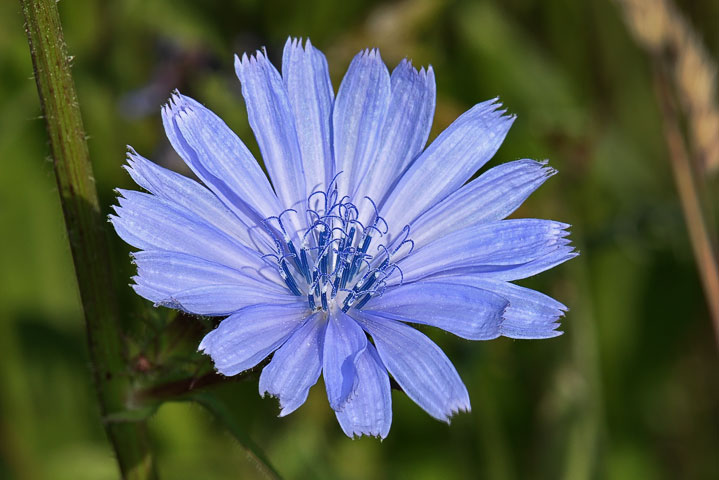 Chicory (Cichorium intybus) is common in southern BC where it is considered to be a noxious weed.
Chicory (Cichorium intybus) is common in southern BC where it is considered to be a noxious weed.
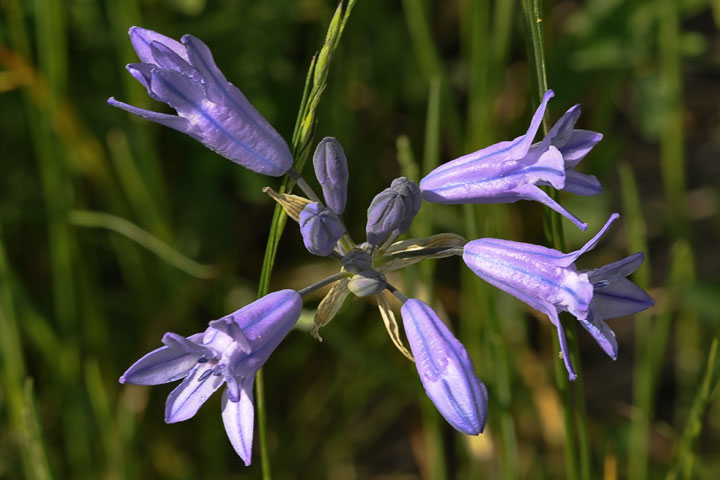 This large–flowered triteleia (Triteleia grandiflora) was found in a clearing.
This large–flowered triteleia (Triteleia grandiflora) was found in a clearing.
 The native purple peavine (Lathyrus nevadensis) looks quite similar the sweat pea.
The native purple peavine (Lathyrus nevadensis) looks quite similar the sweat pea.
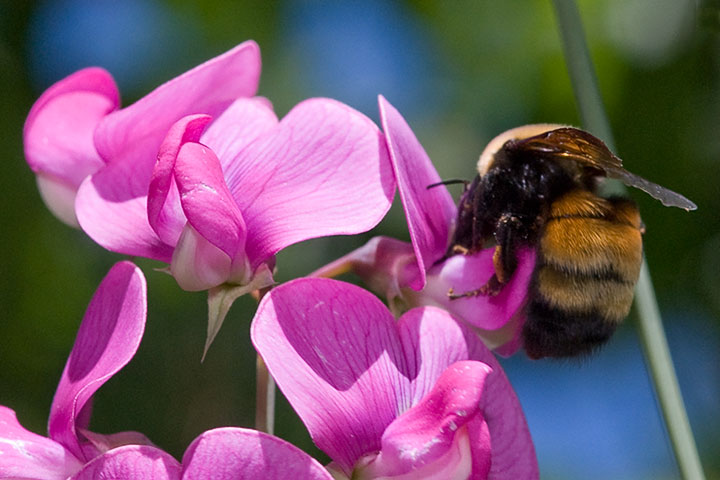 The bumblebees which take an interest in the purple peavine are much larger than those which sip at clover.
The bumblebees which take an interest in the purple peavine are much larger than those which sip at clover.
 The climbing nightshade (Solanum dulcamara), also known as the European bittersweet, is an introduced species, but one which has been naturalized in BC.
The climbing nightshade (Solanum dulcamara), also known as the European bittersweet, is an introduced species, but one which has been naturalized in BC.
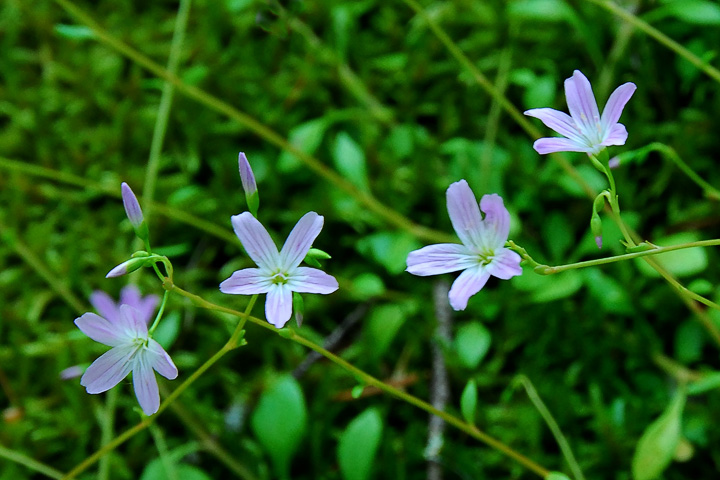 This flower has stoutly resisted my attempts at identification, so I just have to respect its privacy.
This flower has stoutly resisted my attempts at identification, so I just have to respect its privacy.
![]()